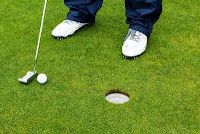 |
Shallow Depth of Field
(Image courtesy of Rasmus Thomsen
at FreeDigitalPhotos.net) |
 |
Shallow Depth of Field
(Image courtesy of pat138241
at FreeDigitalPhotos.net) |
 |
Broad Depth of Field
(Image courtesy of franky242
at FreeDigitalPhotos.net) |
APERTURE : As we have already discussed about Aperture in the Exposure section that it is the opening inside the lens which determines how much light reaches the Sensor, i.e. smaller the opening, less light gets into the sensor and bigger the opening, more light gets into the sensor. So when there is a Smaller Opening of the Lens, i.e. Smaller Aperture or Bigger F-stops value, e.g. F/22, then we get Large or Broad Depth of Field, i.e. a large portion of an image / scene or the whole image / scene appear sharp or is in focus. On the other hand, when there is a Bigger Opening of the Lens, i.e. Bigger Aperture or Smaller F-stops value, e.g. F/1.8, then we get Short or Shallow Depth of Field, i.e. a small portion of an image / scene appear sharp or is in focus. So now it is clear that we can control the Depth of Field by changing the size of Aperture.
FOCAL LENGTH : Beside Aperture, Focal Length is the another factor that controls the Depth of Field. As we all know that Focal Length is the length between the Sensor & the Lens, so with the increase in the Focal Length, the Depth of Field decreases and with the decrease in Focal Length, the Depth of Field increases while keeping same distance between the camera & the subject. In other words, lets take an example & position our camera at some distance away from our subject to shoot a picture of the same using 18 - 200mm lens, so now if we take the picture keeping the Focal Length of the Lens at 18mm then we can see that the subject as well as the background & the foreground everything appears sharp or are in focus in the picture, which means when the Focal Length is less we get Broad Depth of Field, but if we increase the zoom from 18mm to 200mm, i.e. increase the Focal Length of the Lens from 18mm to 200mm, then we can see that only the subject looks sharp or is in focus and the foreground & the background looks totally blurry in the picture, which means when we increase the Focal Length we get Shallow Depth of Field. So now it is clear that how the Focal Length determines the Depth of Field without changing the distance between the camera & the subject. But to get these effects of Depth of Field, we need either a advanced Prosumer Digital Camera or a Digital SLR Camera where we can have Zoom Lens & we can increase or decrease the Focal Length of the Lens. On the other side, in a Compact Point & Shoot Digital Camera we get fixed (non - zoom) lens, so we cannot control the Depth of Field as it is designed to give maximum possible Depth of Field and, more or less, everything appears sharp or is in focus in the picture.
DISTANCE TO THE SUBJECT : Apart from Aperture & Focal Length, the third & final factor that controls the Depth of Field is the Distance to the Subject from the Camera. So, without changing the Focal Length & the Aperture, if we keep our Camera closer to the Subject & take a picture then we can see that only the subject looks sharp or is in focus and the foreground & the background looks totally blurry in the picture, which means when the Distance between the Camera & the Subject is smaller, we get Short or Shallow Depth of Field. On the other hand, if we keep our Camera far away from the Subject & take a picture then we can see that, not only the subject, everything including the foreground & the background appears sharp or are in focus in the picture, which means when the Distance between the Camera & the Subject is longer, we get Large or Broad Depth of Field. So, by changing the distance from the Subject to the Camera and keeping the same Aperture value & Focal Length of the lens, we can control the Depth of Field.
No comments:
Post a Comment